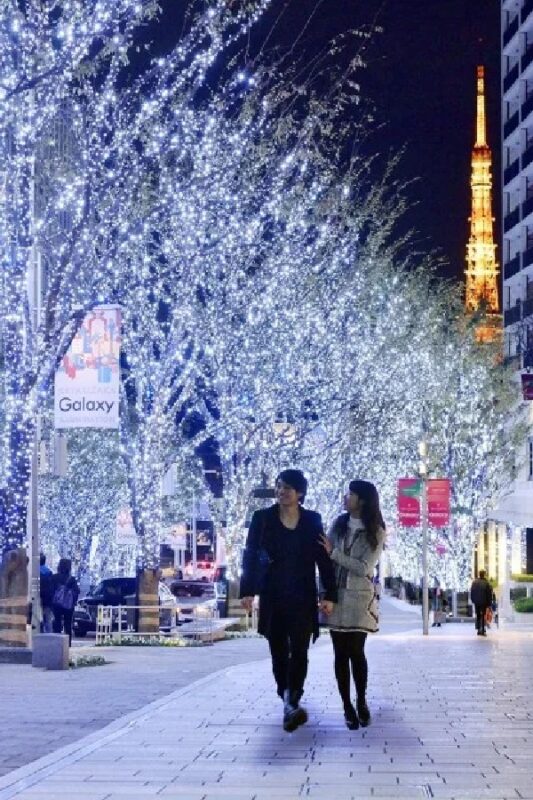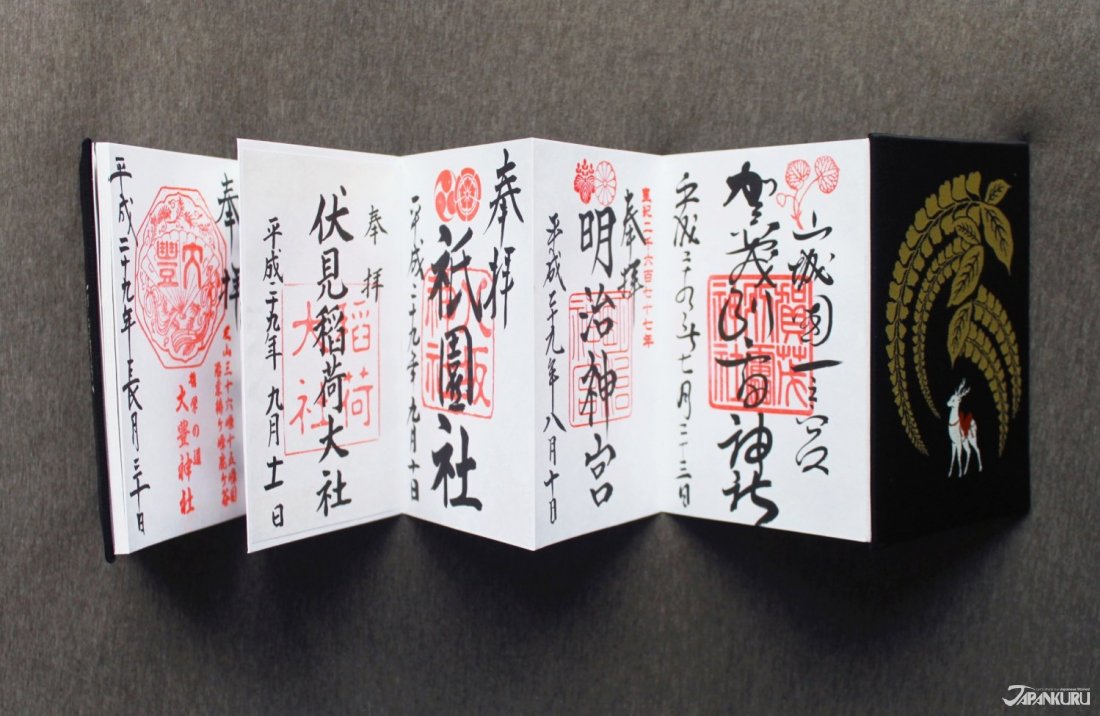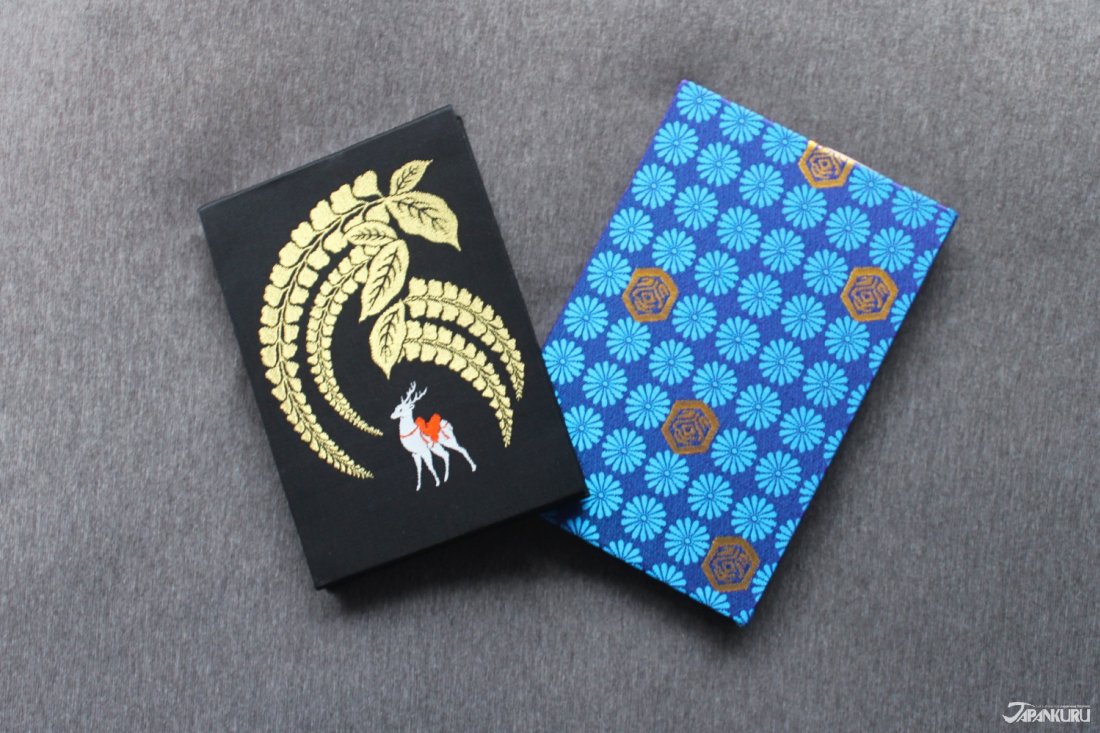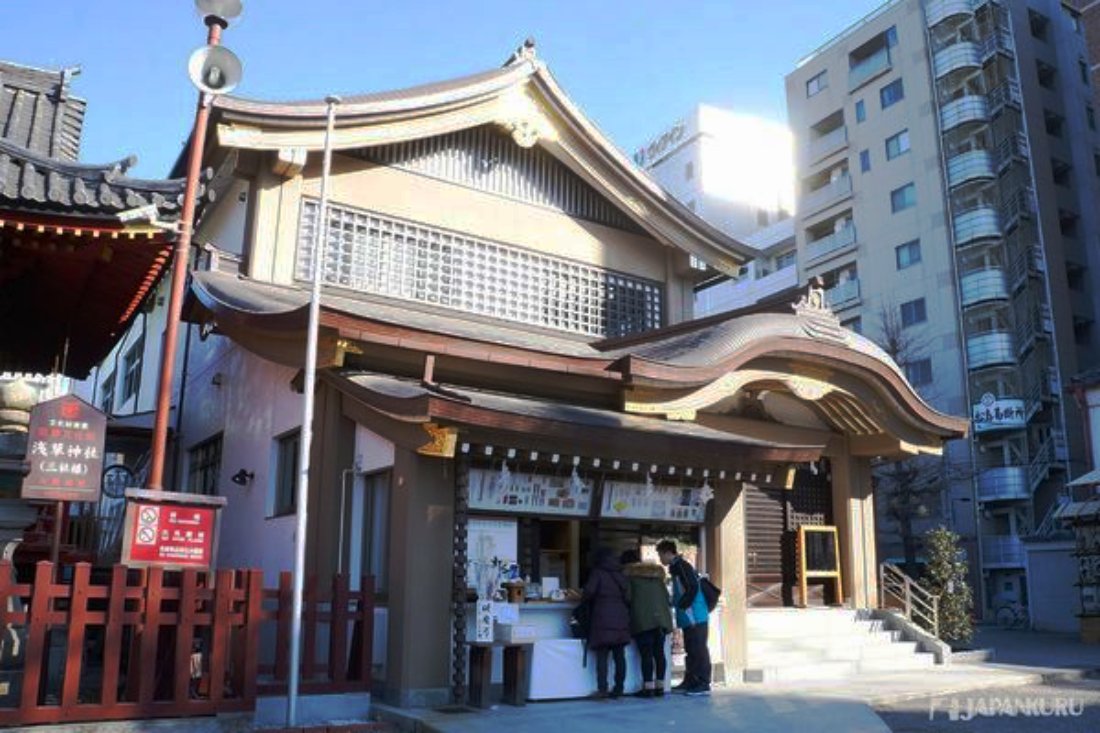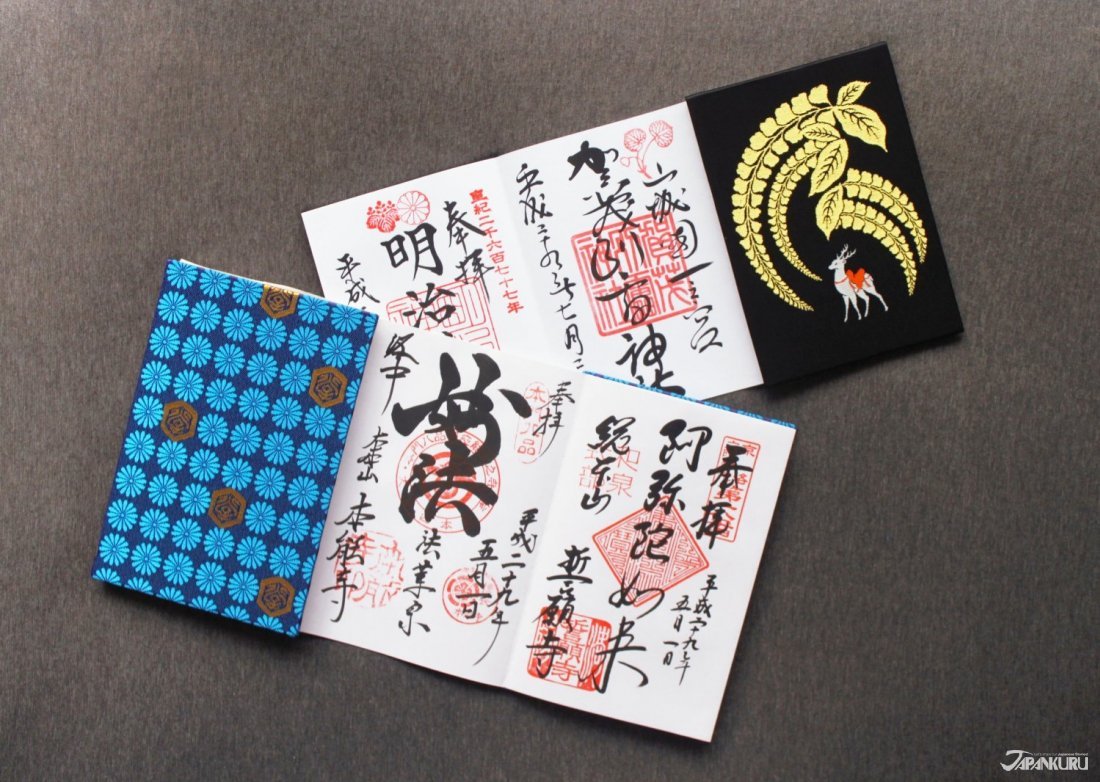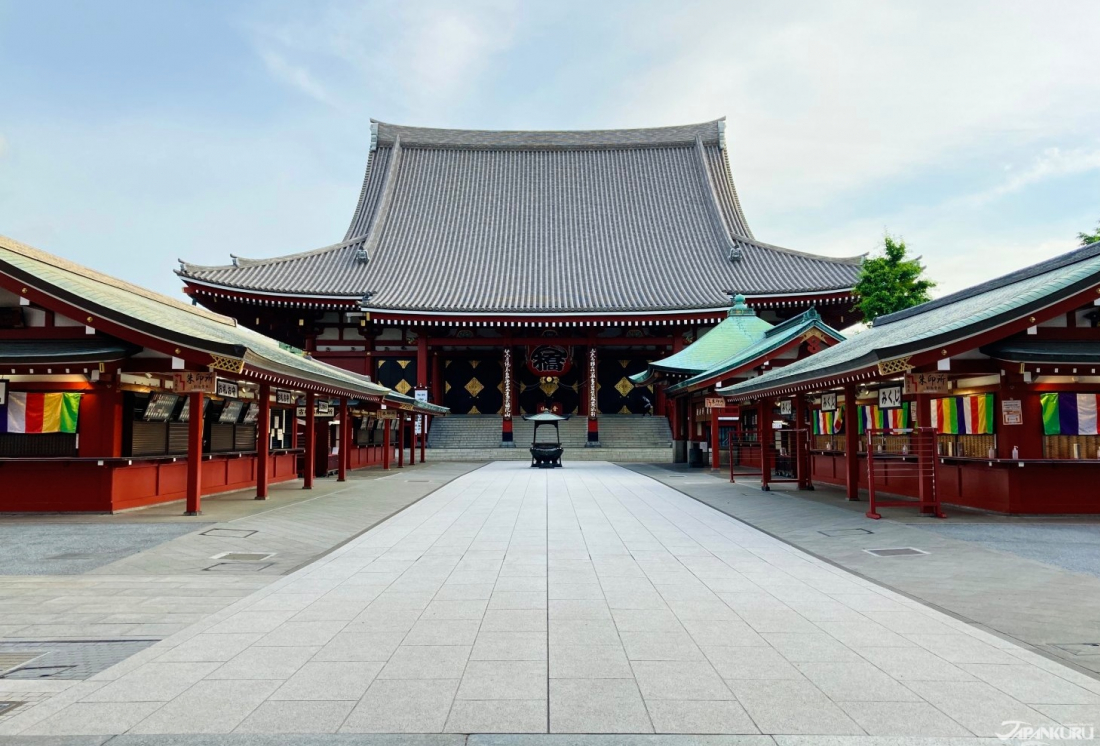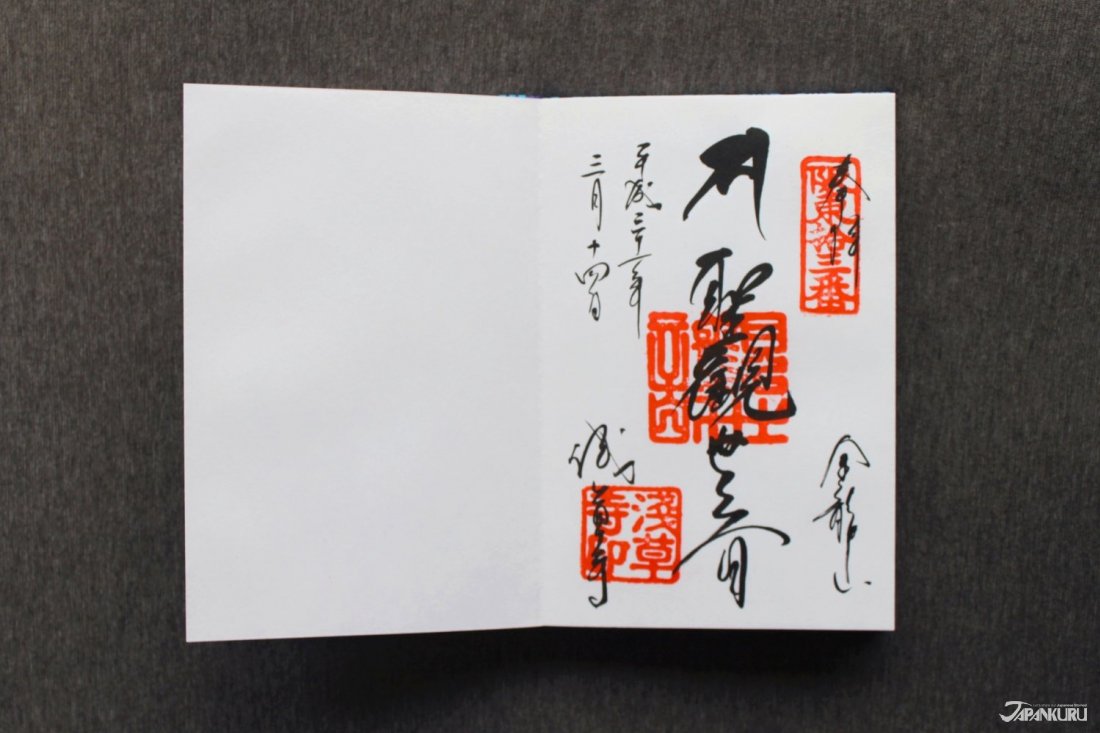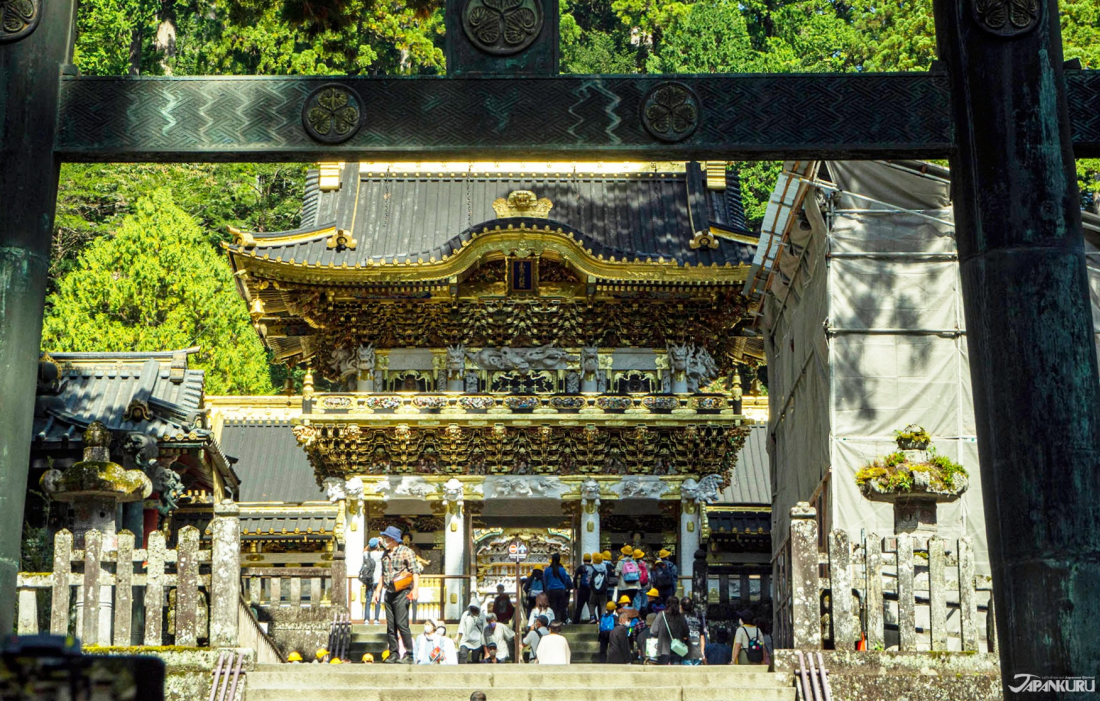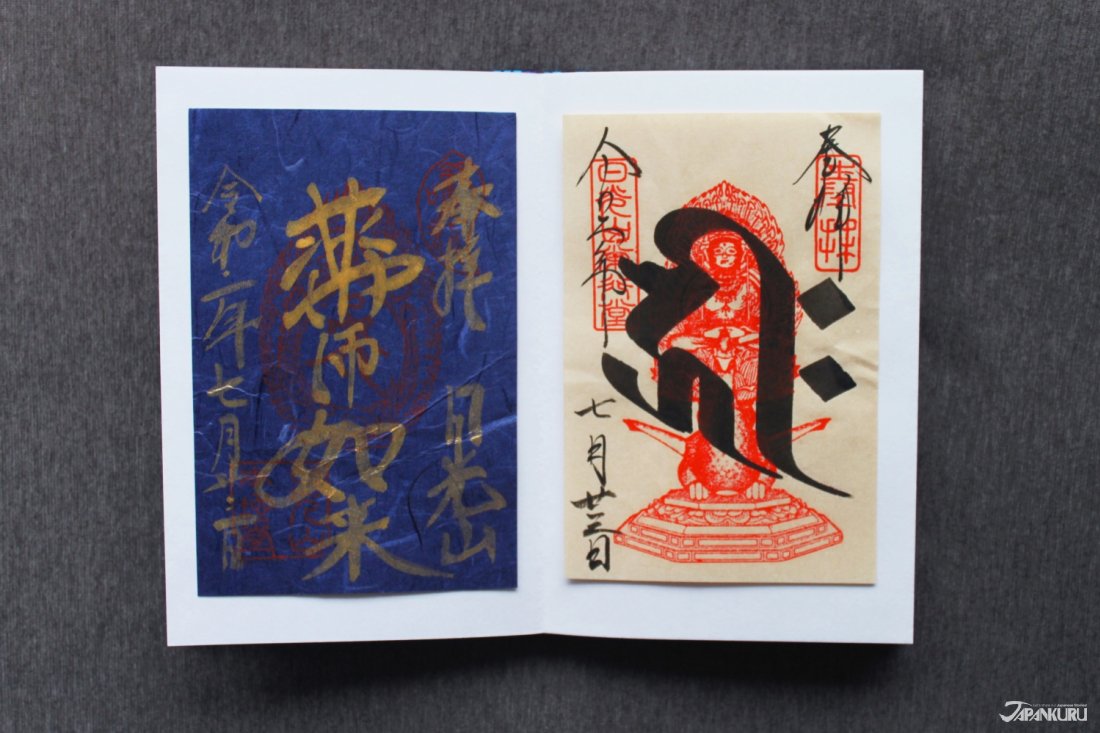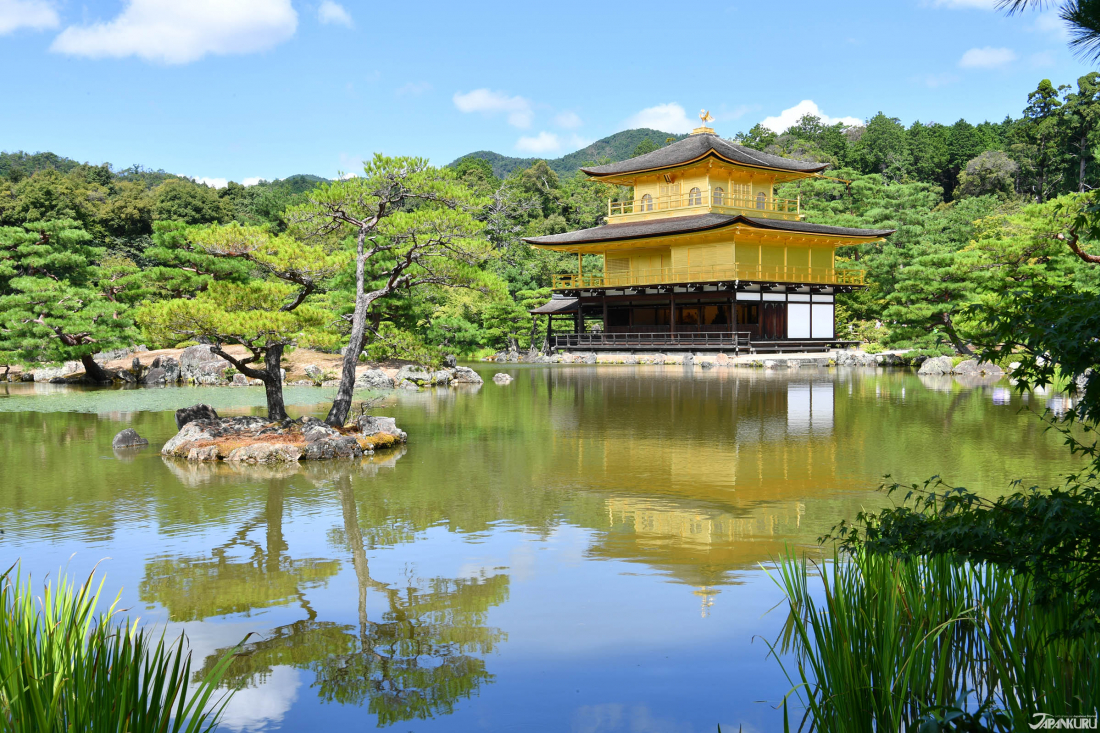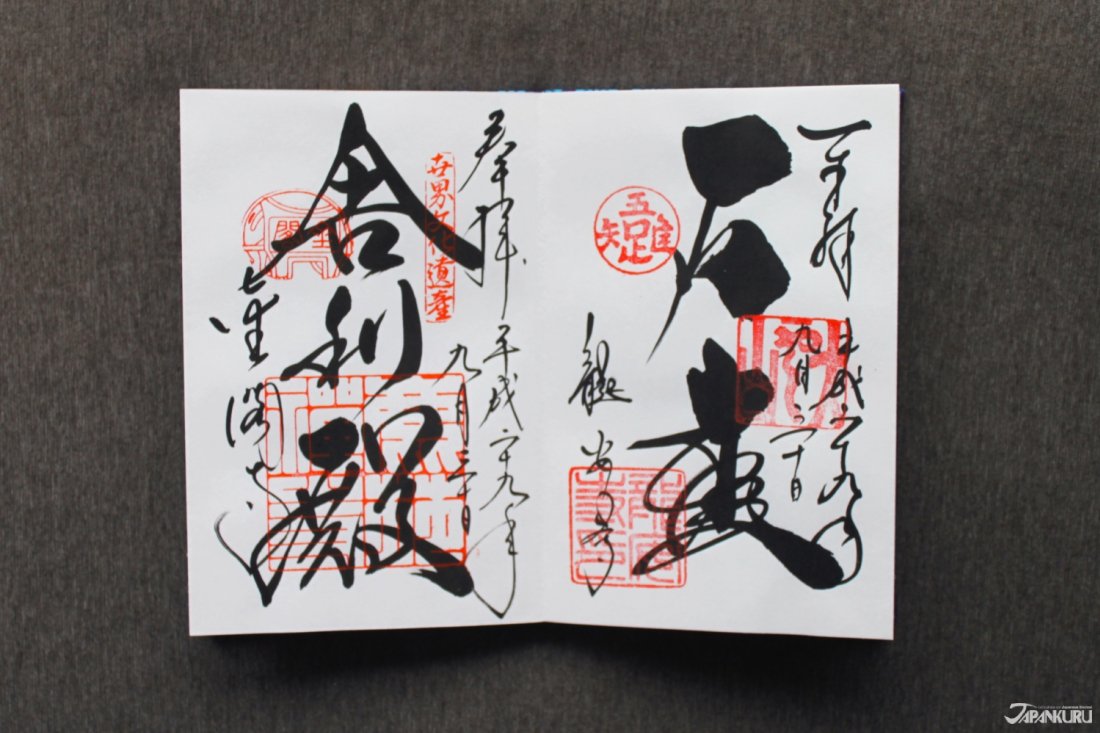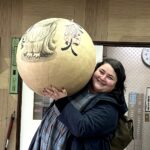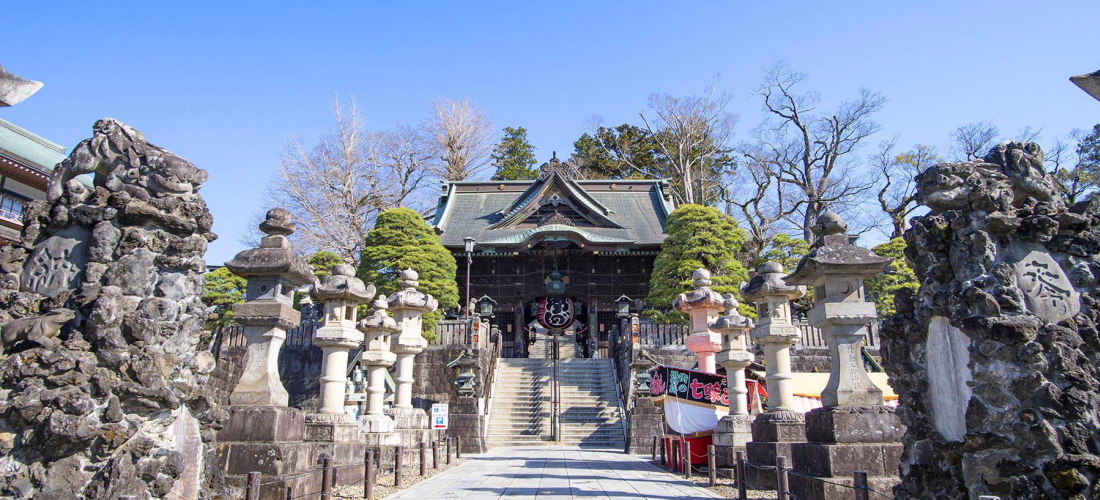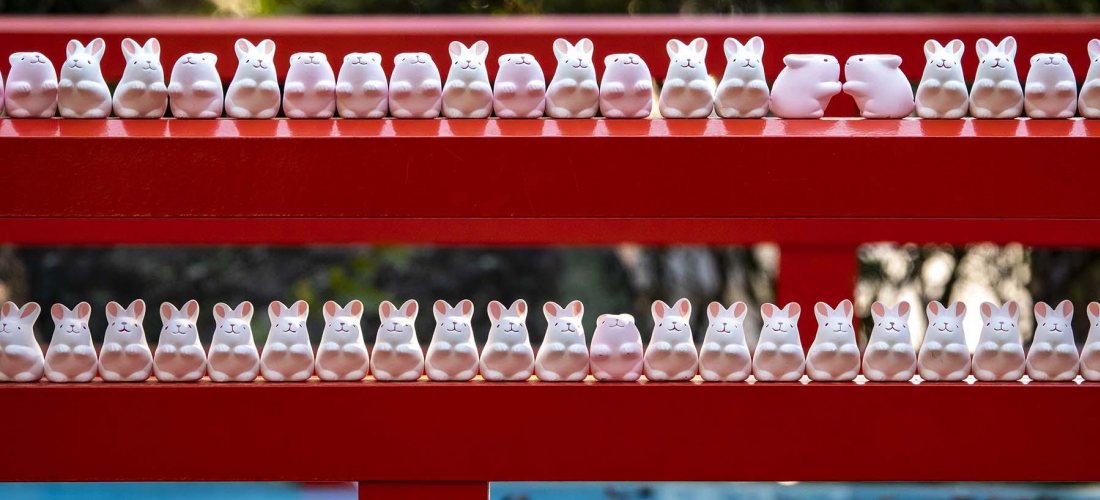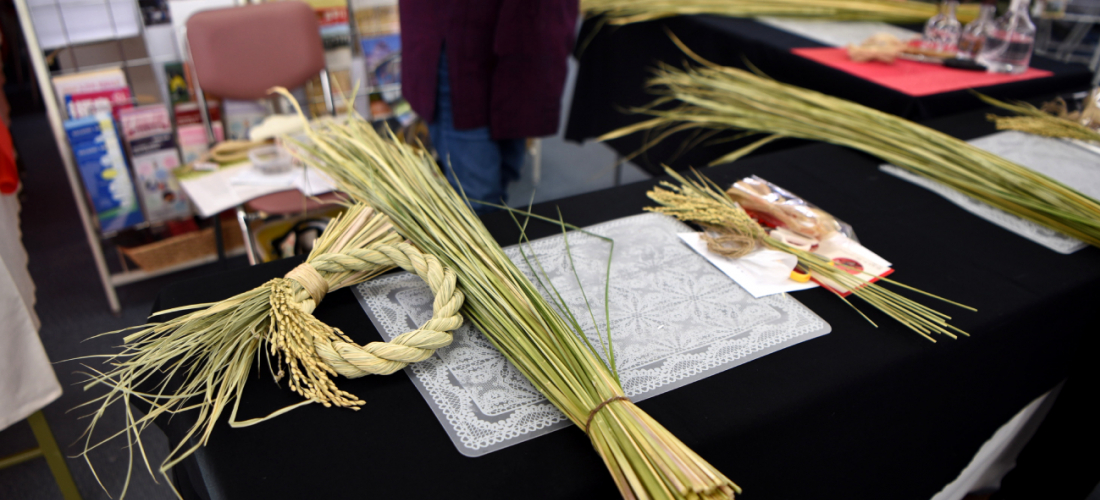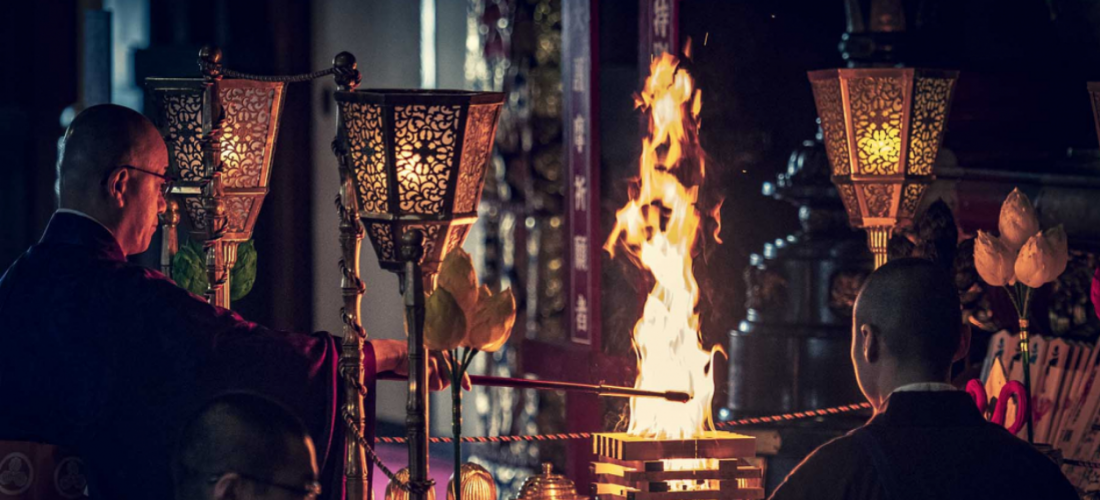Each stamp, and each line of calligraphy, makes each goshuin a beautiful memento of the shrines and temples found all around Japan.
CONTENTS
What Is a Goshuin?
Simply put, goshuin are the official seals of shrines and temples, collected in books to represent the many Shinto and Buddhist sites found all over Japan. Historically, it's said that religious pilgrims collected these pages of red stamps and black calligraphy as proof of a visit to a shrine or prayers made at a temple, with the pilgrims hoping that this official evidence might help even into the afterlife. But these days, collecting goshuin seals from Shinto shrines and Buddhist temples around Japan has become an increasingly popular hobby, and not just for religious pilgrims. The pages of vivid red stamps and striking traditional characters are collected in colorful, beautifully decorated books, and not only are goshuin beautiful, but each seal represents a stop on a journey through Japan. (In fact, the calligraphy in each goshuin generally includes a religious reference, the shrine or temple name, and the date!) Once popular among a much older generation, goshuin collecting has made a major comeback as a hobby for young people in Japan, and it's catching on among well-informed travelers as well.
Plus, most travelers end up visiting quite a few shrines and temples while sightseeing in Japan (not to mention people who live here), so for anybody who likes to collect mementos and souvenirs… well, there are only so many omamori good luck charms you can buy before it becomes too much. Instead of collecting a hodgepodge of charms and fortunes, many travelers are starting to appreciate the simple, compact elegance of a goshuin collection. So next time you visit a shrine or temple in Japan, why not give goshuin collecting a try?
How to Start Collecting Goshuin
First things first, you'll need a book called a "goshuincho" (御朱印帳) to collect your goshuin! These books contain one very long sheet of paper, which folds up accordion-style to create a number of pages, made to be filled up page-by-page with goshuin from shrines and temples all over Japan. The books vary somewhat in size, and come in an endless number of designs, but standard goshuin generally cost around 1,000 ~ 2,000 yen. They're sold in department stores, stationery shops, at craft and flea markets, and most popular of all, at shrines and temples themselves. In fact, many shrines and temples sell goshuincho decorated with their own custom designs, and there are even websites in Japan that document all these different design options. Not only do goshuin lovers search out their favorite temple and shrine seals, but they also go to shrines and temples specifically to buy a particularly attractive book to put it all in! Sometimes, though, the best option is just to buy your goshuincho at a shrine or temple that felt special to you, as a special memento of your visit.
Once you're ready to start collecting goshuin, then head to a temple or shrine! There are some temples and shrines in Japan that don't offer goshuin, but even surprisingly small spots often do, so your options are just about endless!
When you get to your destination, your first step should actually be to pray. In the end, goshuin are connected to religion and spirituality in Japan, and they're traditionally seen as proof that you visited the shrine or temple, and made your prayers to the appropriate deity. Even if you aren't interested in the religious aspects of this tradition, it's always a good idea to go and "pay your respects," so to speak, before collecting your goshuin.
Next, you can look for where to get your goshuin. Many shrines and temples will have windows specifically for goshuin, or even separate buildings, so you should start by looking for signs that say goshuin (ご朱印 or 御朱印) in Japanese. Sometimes, goshuin will be offered at the same spot as omamori good luck charms, so if you don't see any signs around, that's a good place to ask.
Finally, when you've found the right spot, you'll be expected to pay first before receiving your goshuin (or, to put it nicely, the goshuin is given to you as proof of your "donation" to the shrine or temple). The price is generally 300 or 500 yen, and it's best to bring exact change, if possible. (They might be able to make change, but it's not ideal to ask, and large bills can be particularly difficult.) Many shrines and temples offer two or more different designs – dedicated to different deities, usually – so be sure to pick which one you want before you get to the counter! You then open your goshuincho to the next blank page for them, hand over the book, and wait for your goshuin.
For smaller, less busy shrines and temples, you can generally stand there for a minute or two and watch the lovely calligraphy being added to your book. Busier spots might take your goshuincho, give you a number, and tell you to come back in 10 or 15 minutes. At their busiest, some places might just hand you a piece of paper with the goshuin already on it, and you can then paste it into your goshuincho at a later time. (In response to COVID, some shrines and temples actually started doing this at all times, for safety reasons.) No matter the process, they'll finally hand you back your book or your slip of paper, and there you have it – a goshuin! Don't forget to say thank you ("arigato gozaimasu")!
Technically, tradition dictates that goshuin for temples and shrines should be kept in separate goshuincho, and any other kinds of stamps or decorations shouldn't be added to a goshuincho at all. Of course, there's a little wiggle room when it comes to "rules" like this! On rare occasions, you might find a temple monk or a shrine priest that will refuse to add a goshuin to a goshuincho that's a mix of both kinds, but there are plenty of people who use just one book for both, so it's not out of the question. However, Japan is full of stamps made to commemorate all kinds of destinations, found everywhere from castles to train stations! Putting those stamps into your goshuincho alongside the religious destinations can come off as disrespectful, so we recommend you collect those in a separate notebook. You can even dedicate another goshuincho to that purpose, if you want, and use it more like a scrapbook to collect all the cute stamps, tickets, and stickers that are a fun and inevitable part of traveling in Japan! If you end up with three different goshuincho, for temples, shrines, and everything else – well, the more the merrier!
Great Spots for New Goshuin Collectors
Where should you get your first goshuin? Where should you look for some cool history and even cooler seals to collect? Well, almost any shrine or temple is a great place to begin (especially if they sell a goshuincho design you particularly like), but here are a few easy ideas to get you started!
Sensoji Temple
Sensoji Temple is one of the most popular tourist destinations in Japan, and is included on the travel itinerary of just about any sightseer touring Tokyo thanks to its status as the city's oldest temple, not to mention the beautiful buildings, the fun along the Nakamise Street, and the general atmosphere of Asakusa. As one of the first temples that many people see in Japan, it's the perfect place to start a goshuin collection!
Fortunately for new collectors starting from Sensoji Temple, you can actually get two different seals while there, since Asakusa Shrine is actually right next to the famous temple. And, even better, both shrine and temple sell goshuincho in some pretty tempting designs, featuring dragons, all kinds of woven patterns, and even the enormous lantern that has become a symbol of Sensoji Temple and the Kaminarimon Gate!
Sensoji Temple (浅草寺)
2-3-1 Asakusa, Taito City, Tokyo
Nikko Toshogu
Just a couple hours north of Tokyo, the Nikko area is a popular destination for a weekend away from the big city, and the name Nikko is just about synonymous with its most famous tourist attraction – Nikko Toshogu Shrine. This enormous complex actually contains not only the intricately decorated Toshogu, constructed in 1617 as a resting place for Tokugawa Ieyasu, but also a far older Shinto shrine, a whole collection of Buddhist temple buildings, and another mausoleum built for Tokugawa Ieyasu's grandson, Tokugawa Iemitsu. Travelers who like to leisurely walk the grounds of Japan's most beautiful shrines and temples could easily while away an entire day at this popular UNESCO World Heritage Site.
Of course, with such a huge number of shrine and temple buildings, many of which are dedicated to different deities, the "two shrines and a temple" of Nikko have a huge number of goshuin available to collect! At last count, there were eleven different goshuin offered at six different locations, a number of which were stamped and written on colorful paper, sometimes even with golden ink. (Many are just simple red stamps and standard black calligraphy, too.) For anyone looking to boost their goshuin collection in just a day, or add a little extra fun color to their goshuincho, there's no better destination.
Nikko Toshogu (日光東照宮)
2301 Sannai, Nikko, Tochigi
Kinkakuji Temple
Kyoto's Rokuonji Temple is much better known as Kinkakuji, which literally means "temple of the golden pavilion," an unofficial name earned thanks to the temple's most striking architectural feature. The history of Kinkakuji actually stretches back to the 13th century, when the former shogun Yoshimitsu Ashikaga built his own little "Buddhist paradise" on the land, including the original golden pavilion. The spot only officially became a Buddhist temple in the year 1420, but over the past six centuries it has become increasingly popular, and these days millions of visitors come each year to see the golden pavilion glittering in the sunlight.
As another UNESCO World Heritage Site, it's a fun place to collect a goshuin, and there's no denying the popularity of the temple's goshuincho, which features the famous pavilion woven from shining golden threads.
Temple lovers visiting Kinkakuji shouldn't miss the chance to check out neighboring Ryoanji, while already in the area. Ryoanji has a somewhat more modest aesthetic, and the temple grounds contain one of Kyoto's most famous rock gardens. You can collect another goshuin there, too!
Kinkakuji Temple (金閣寺)
1 Kinkakujicho, Kita Ward, Kyoto
Ready to Start Collecting?
Goshuin collecting is a fun hobby that can be taken all over Japan, from the country's most vibrant red shrine gates to the most tranquil temple gardens, and used to gather memories from every stop along the way. In the end, the finished product is a beautiful, nostalgic memento of your travels through Japan, and the more goshuin you have to fill up your goshuincho the better – so don't wait until halfway through your trip to start!
For more info and updates from Japan, check Japankuru for new articles, and don't forget to follow us on Twitter, Instagram, and Facebook!
Half a lifetime ago I came to Japan for a semester abroad... and I never left. I guess I really like the place! I spent my first few years in Japan living in the middle of nowhere, so I'd love to hear your Tokyo recommendations via Japankuru's social media accounts!
COMMENT
FEATURED MEDIA
VIEW MORE 
A New Tokyo Animal Destination: Relax & Learn About the World’s Animals in Japan
#pr #japankuru #anitouch #anitouchtokyodome #capybara #capybaracafe #animalcafe #tokyotrip #japantrip #카피바라 #애니터치 #아이와가볼만한곳 #도쿄여행 #가족여행 #東京旅遊 #東京親子景點 #日本動物互動體驗 #水豚泡澡 #東京巨蛋城 #เที่ยวญี่ปุ่น2025 #ที่เที่ยวครอบครัว #สวนสัตว์ในร่ม #TokyoDomeCity #anitouchtokyodome

Shohei Ohtani Collab Developed Products & Other Japanese Drugstore Recommendations From Kowa
#pr #japankuru
#kowa #syncronkowa #japanshopping #preworkout #postworkout #tokyoshopping #japantrip #일본쇼핑 #일본이온음료 #오타니 #오타니쇼헤이 #코와 #興和 #日本必買 #日本旅遊 #運動補充能量 #運動飲品 #ช้อปปิ้งญี่ปุ่น #เครื่องดื่มออกกำลังกาย #นักกีฬา #ผลิตภัณฑ์ญี่ปุ่น #อาหารเสริมญี่ปุ่น

도쿄 근교 당일치기 여행 추천! 작은 에도라 불리는 ‘가와고에’
세이부 ‘가와고에 패스(디지털)’ 하나면 편리하게 이동 + 가성비까지 완벽하게! 필름카메라 감성 가득한 레트로 거리 길거리 먹방부터 귀여움 끝판왕 핫플&포토 스폿까지 총집합!
Looking for day trips from Tokyo? Try Kawagoe, AKA Little Edo!
Use the SEIBU KAWAGOE PASS (Digital) for easy, affordable transportation!
Check out the historic streets of Kawagoe for some great street food and plenty of picturesque retro photo ops.
#pr #japankuru #도쿄근교여행 #가와고에 #가와고에패스 #세이부패스 #기모노체험 #가와고에여행 #도쿄여행코스 #도쿄근교당일치기 #세이부가와고에패스
#tokyotrip #kawagoe #tokyodaytrip #seibukawagoepass #kimono #japantrip

Hirakata Park, Osaka: Enjoy the Classic Japanese Theme Park Experience!
#pr #japankuru #hirakatapark #amusementpark #japantrip #osakatrip #familytrip #rollercoaster #retrôvibes #枚方公園 #大阪旅遊 #關西私房景點 #日本親子旅行 #日本遊樂園 #木造雲霄飛車 #히라카타파크 #สวนสนุกฮิราคาตะพาร์ค

🍵Love Matcha? Upgrade Your Matcha Experience With Tsujiri!
・160년 전통 일본 말차 브랜드 츠지리에서 말차 덕후들이 픽한 인기템만 골라봤어요
・抹茶控的天堂!甜點、餅乾、飲品一次滿足,連伴手禮都幫你列好清單了
・ส่องมัทฉะสุดฮิต พร้อมพาเที่ยวร้านดังในอุจิ เกียวโต
#pr #japankuru #matcha #matchalover #uji #kyoto #japantrip #ujimatcha #matchalatte #matchasweets #tsujiri #말차 #말차덕후 #츠지리 #교토여행 #말차라떼 #辻利抹茶 #抹茶控 #日本抹茶 #宇治 #宇治抹茶 #日本伴手禮 #抹茶拿鐵 #抹茶甜點 #มัทฉะ #ของฝากญี่ปุ่น #ชาเขียวญี่ปุ่น #ซึจิริ #เกียวโต

・What Is Nenaito? And How Does This Sleep Care Supplement Work?
・你的睡眠保健品——認識「睡眠茶氨酸錠」
・수면 케어 서플리먼트 ‘네나이토’란?
・ผลิตภัณฑ์เสริมอาหารดูแลการนอน “Nenaito(ネナイト)” คืออะไร?
#pr #japankuru #sleepcare #japanshopping #nenaito #sleepsupplement #asahi #睡眠茶氨酸錠 #睡眠保健 #朝日 #l茶胺酸 #日本藥妝 #日本必買 #일본쇼핑 #수면 #건강하자 #네나이토 #일본영양제 #อาหารเสริมญี่ปุ่น #ช้อปปิ้งญี่ปุ่น #ร้านขายยาญี่ปุ่น #ดูแลตัวเองก่อนนอน #อาซาฮิ

Japanese Drugstore Must-Buys! Essential Items from Hisamitsu® Pharmaceutical
#PR #japankuru #hisamitsu #salonpas #feitas #hisamitsupharmaceutical #japanshopping #tokyoshopping #traveltips #japanhaul #japantrip #japantravel

Whether you grew up with Dragon Ball or you just fell in love with Dragon Ball DAIMA, you'll like the newest JINS collab. Shop this limited-edition Dragon Ball accessory collection to find some of the best Dragon Ball merchandise in Japan!
>> Find out more at Japankuru.com! (link in bio)
#japankuru #dragonball #dragonballdaima #animecollab #japanshopping #jins #japaneseglasses #japantravel #animemerch #pr

This month, Japankuru teamed up with @official_korekoko to invite three influencers (originally from Thailand, China, and Taiwan) on a trip to Yokohama. Check out the article (in Chinese) on Japankuru.com for all of their travel tips and photography hints - and look forward to more cool collaborations coming soon!
【橫濱夜散策 x 教你怎麼拍出網美照 📸✨】
每次來日本玩,是不是都會先找旅日網紅的推薦清單?
這次,我們邀請擁有日本豐富旅遊經驗的🇹🇭泰國、🇨🇳中國、🇹🇼台灣網紅,帶你走進夜晚的橫濱!從玩樂路線到拍照技巧,教你怎麼拍出最美的夜景照。那些熟悉的景點,換個視角說不定會有新發現~快跟他們一起出發吧!
#japankuru #橫濱紅磚倉庫 #汽車道 #中華街 #yokohama #japankuru #橫濱紅磚倉庫 #汽車道 #中華街 #yokohama #yokohamaredbrickwarehouse #yokohamachinatown

If you’re a fan of Vivienne Westwood's Japanese designs, and you’re looking forward to shopping in Harajuku this summer, we’ve got important news for you. Vivienne Westwood RED LABEL Laforet Harajuku is now closed for renovations - but the grand reopening is scheduled for July!
>> Find out more at Japankuru.com! (link in bio)
#japankuru #viviennewestwood #harajuku #omotesando #viviennewestwoodredlabel #viviennewestwoodjapan #비비안웨스트우드 #오모테산도 #하라주쿠 #日本購物 #薇薇安魏斯伍德 #日本時尚 #原宿 #表參道 #japantrip #japanshopping #pr

Ready to see TeamLab in Kyoto!? At TeamLab Biovortex Kyoto, the collective is taking their acclaimed immersive art and bringing it to Japan's ancient capital. We can't wait to see it for ourselves this autumn!
>> Find out more at Japankuru.com! (link in bio)
#japankuru #teamlab #teamlabbiovortex #kyoto #kyototrip #japantravel #artnews
Photos courtesy of teamLab, Exhibition view of teamLab Biovortex Kyoto, 2025, Kyoto ® teamLab, courtesy Pace Gallery

Japanese Makeup Shopping • A Trip to Kamakura & Enoshima With Canmake’s Cool-Toned Summer Makeup
#pr #canmake #enoshima #enoden #에노시마 #캔메이크 #japanesemakeup #japanesecosmetics

⚔️The Robot Restaurant is gone, but the Samurai Restaurant is here to take its place. Check it out, and don't forget your coupon!
🍣신주쿠의 명소 로봇 레스토랑이 사무라이 레스토랑으로 부활! 절찬 쿠폰 발급중
💃18歲以上才能入場的歌舞秀,和你想的不一樣!拿好優惠券去看看~
#tokyo #shinjuku #samurairestaurant #robotrestaurant #tokyotrip #도쿄여행 #신주쿠 #사무라이레스토랑 #이색체험 #할인이벤트 #歌舞伎町 #東京景點 #武士餐廳 #日本表演 #日本文化體驗 #japankuru #japantrip #japantravel #japanlovers #japan_of_insta

Japanese appliance & electronics shopping with our KOJIMA x BicCamera coupon!
用JAPANKURU的KOJIMA x BicCamera優惠券買這些正好❤️
코지마 x 빅 카메라 쿠폰으로 일본 가전 제품 쇼핑하기
#pr #japankuru #japanshopping #kojima #biccamera #japaneseskincare #yaman #dji #osmopocket3 #skincaredevice #日本購物 #美容儀 #相機 #雅萌 #日本家電 #일본여행 #면세 #여행꿀팁 #일본쇼핑리스트 #쿠폰 #일본쇼핑 #일본브랜드 #할인 #코지마 #빅카메라 #japankurucoupon
MAP OF JAPAN
SEARCH BY REGION

LATEST
VIEW MOREEVENT CALENDAR
VIEW MORE